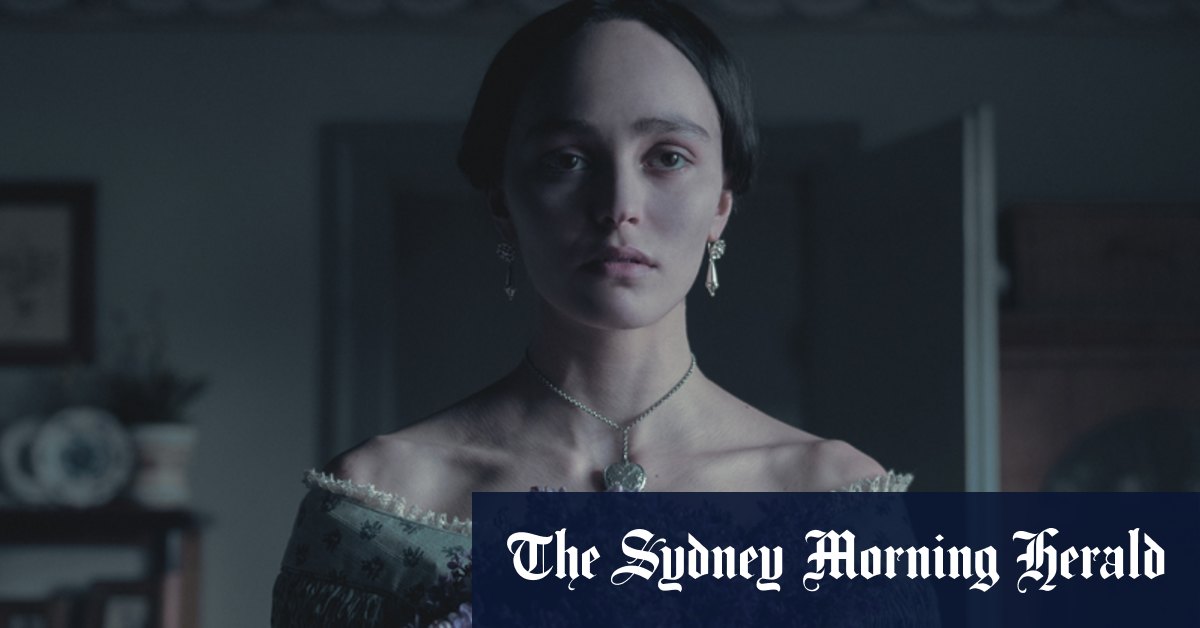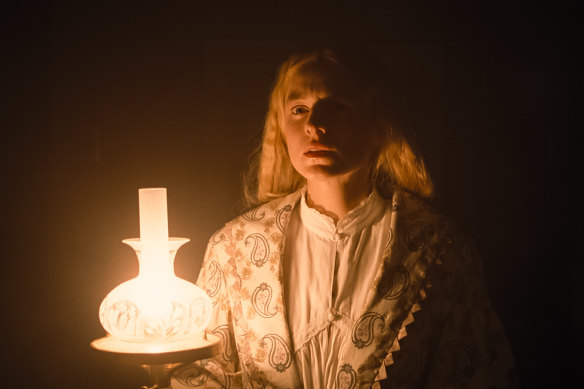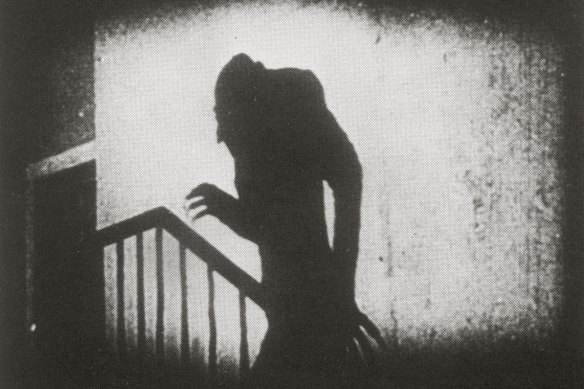
NOSFERATU ★★★
(M) 132 minutes
Among the many trademarks Robert Eggers has established across his small but distinctive body of work is an acknowledgement of his sources.
The Witch was drawn, he told us in his usual italic end-credits font (custom-designed, as it has been for all his films, by Teddy Blanks), from “many folktales, fairytales and written accounts of historical witchcraft” from the puritan era. The Lighthouse drew from diaries of lighthouse keepers, sea shanties and the stories of Edgar Allan Poe and HP Lovecraft. The Northman combined elements of an old Norse saga and Shakespeare’s Hamlet.

Emma Corrin stars as Anna Harding.Credit: Universal
For Nosferatu, Eggers draws on two principal sources: Bram Stoker’s 1897 gothic novel Dracula and F.W. Murnau’s 1922 movie Nosferatu: A Symphony of Horror. And those sources colour (or decolour) everything about the film.
Murnau’s movie has a rather complex relationship to Stoker’s book (if you’ve never read the latter, do; it’s a superbly inventive and psychologically rich piece of horror, and still feels surprisingly modern).
The film was an unauthorised adaptation, Stoker’s widow sued for plagiarism, and the destruction of the film was ordered. Thankfully, some copies of this undisputed masterpiece of German Expressionism – think stark lighting, elongated shadows, and exaggerated gestures and angles – survived.

F.W. Murnau’s film casts a very long shadow over Eggers’ latest.
Plotwise, Eggers’ Nosferatu is all Stoker, but stylistically is enormously indebted to Murnau. He uses the Germanised names and settings. Stoker’s protagonist, Jonathan Harker, is here called Thomas Hutter (Nicholas Hoult) and the vampire is known both as Count Orlok and Nosferatu (an unrecognisable Bill Skarsgard).
Much of the action takes place in the German town of Wisborg, not Yorkshire’s Whitby. The vampire’s object of fascination is Hutter’s wife Ellen (Lily-Rose Depp), not Mina. Her best friend – and early vampire victim – is Anna Harding (Emma Corrin), not Lucy Westenra.



